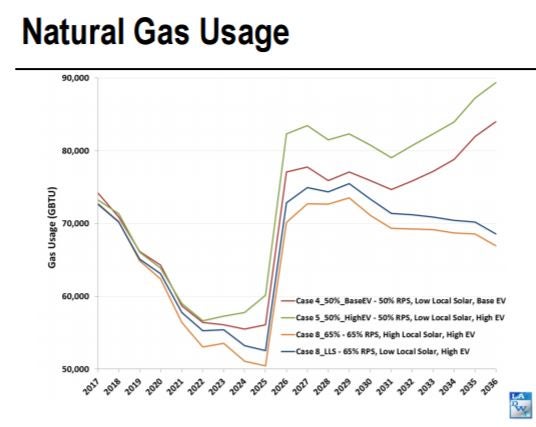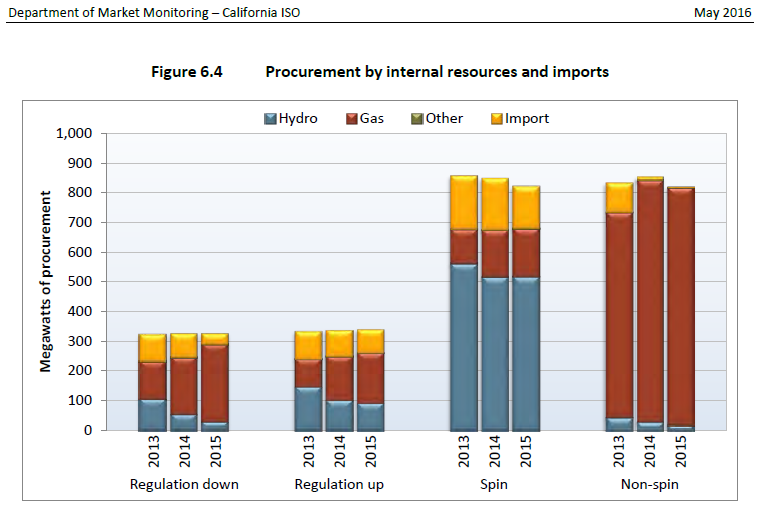Aliso Canyon Decisions Must Be About More Than Just Near-Term Safety
 After months of speculation, the California agency in charge of setting standards for oil and gas operations (“DOGGR”) this week announced a pair of meetings to take public comment on the reopening of the Aliso Canyon Natural Gas Storage Facility.
After months of speculation, the California agency in charge of setting standards for oil and gas operations (“DOGGR”) this week announced a pair of meetings to take public comment on the reopening of the Aliso Canyon Natural Gas Storage Facility.
This development stems from legislation passed in 2016 (SB 380), and is expected to be among the final steps before Southern California Gas Corporation (SoCalGas) is allowed to restart limited use of the facility. So, while it’s critical for the state to get its decisions right for safety and near-term electric reliability related to Aliso, to fully comply with SB 380, the decisions being made also need to take into account the larger issues facing California today.
Don’t compromise on public health and safety
Multiple state policies – including SB 380, Governor Brown’s Aliso Canyon executive order, and upcoming DOGGR regulations — carry mandates to prevent gas storage facilities from posing a public danger and repeating the massive four-month health and safety crisis that occurred between late 2015 and early 2016.
In parallel with those efforts, throughout 2016 DOGGR carried out a lengthy process involving numerous state agencies, experts from the national labs and oil and gas industry, and public input to create a comprehensive well inspection and facility reopening protocol. This protocol requires all 114 wells on the Aliso Canyon site to either be fully tested and/or retrofitted, or be taken out of operation (results of all tests are available on the DOGGR webpage).
DOGGR and the state’s Public Utilities Commission (CPUC) also ordered a full root cause analysis to be performed – something that commonly follows major accidents and releases. But now SoCalGas is petitioning DOGGR to allow for reinjection into Aliso Canyon before this analysis is fully completed.
Since that root cause analysis may yield important information on what went wrong and what health and safety protections the field should be subjected to going forward, it would be prudent for any decision DOGGR makes allowing reinjection into the facility to act only on a temporary basis until both the final analysis and permanent gas storage safety regulations are complete.
Southern California must also focus on long-term energy reliability and climate goals
In addition to protecting public safety, SB 380 signaled a preference for “minimizing or eliminating use of” the facility so long as the region can maintain energy and electric reliability and affordability of energy service. Therefore, if DOGGR determines that Aliso Canyon should reopen because it does not pose a safety risk, it should therefore only do so on a limited basis because this decision involves much more than near-term safety.
There is no denying that Aliso Canyon highlighted California’s heavy reliance on natural gas for electric reliability, even if there is an active conversation on “how” reliant the region actually is on this particular facility. Case in point: Since the facility was taken offline, state agencies have developed two action plans to reduce the risk of energy outages, and SoCalGas issued an official advisory warning of potential energy shortages in December.
But even if the reliability plans have alleviated some of the short term risk associated with limited gas availability from Aliso, they don’t address the long-term needs of the region: changing the overall direction away from dependence of natural gas for reliability purposes, or meeting energy and environmental policy goals for integration of renewables while also reducing greenhouse gases.
One key example of the need to focus on climate and reliability goals in the context of Aliso Canyon is the most recent Integrated Resource Plan for Los Angeles Department of Water and Power (LADWP). While the utility is currently on the path to achieve 50% renewable energy by 2030, it also forecasts a 30-40% jump in natural gas use for power generation in 2025. As stated by LADWP, this jump in gas use is due to the need to build and operate new natural gas power plants (as old ones are taken offline) to balance the increasing volumes of renewable energy on the system.

What the gas demand forecast in LADWP exemplifies is that under the current system, natural gas power plants will be needed as utilities pursue higher renewable energy targets. This is because gas and electric markets have been designed to prevent economic signals which incent the widespread investment and development of alternatives to gas for meeting reliability needs. This doesn’t mean the region should just maintain facilities like Aliso, but rather needs to shift towards a system with more diverse energy sources and fair market opportunities for cost-effective clean resources. (Notably, with the passage of a new resolution in Los Angeles to study a pathway towards 100% renewable energy and away from gas dependence, the city seems to understand the task before it.) After all, since combustion of natural gas releases greenhouse gases, this projected jump in gas use undermines the progress of the utility, which has cut overall greenhouse gas emissions by 23% since 1990.
Heavy Reliance on Natural Gas is a Statewide Issue Too
What LADWP’s gas forecast demonstrates is that bulletproofing Aliso Canyon from future well failures won’t remedy the fundamental problem of heavy reliance on natural gas for balancing the electric system. However, looking at the Aliso Canyon situation in the larger context, it’s easy to see this isn’t just a Southern California problem.
A piece of evidence that highlights the state’s heavy reliance on natural gas for balancing the electric system can be seen deeply embedded on page 145 of a report issued by California’s grid operator (CAISO) in 2015. On it, CAISO shows that nearly 98% of the energy availability from sources sitting in non-spinning stand-by mode in 2015 (power generators that sit in the off position but which are able to be turned on quickly) were natural gas power plants – with negligible contributions from alternatives.

What the CAISO graph shows is that natural gas is a key part of managing the current power system in California, and will continue to be so as the state ramps up renewable energy generation in the years to come.
Post Aliso Canyon: the CPUC, CAISO and other state agencies have launched new efforts to study natural gas storage. They have also started to study and create new market opportunities for alternatives to gas, and have started evaluating how the energy system reliability value that gas provides can be met with alternatives. However, with over a year since the state’s largest gas leak shed light on a much larger problem, a lot of open questions remain unanswered. An important solution to this will be the conclusion of ongoing and new public rulemaking proceedings at the CPUC – however EDF will write about that topic in the future.
What’s next?
In complying with SB 380, DOGGR, the CPUC and the state must recognize that even if the Aliso Canyon facility has satisfied initial inspection requirements, the disaster set in motion numerous actions that evaluate the use of natural gas storage in California and the needed integration of other resources. As a result, to comply with the preference for minimizing or eliminating use of Aliso Canyon going forward, any decision to reopen the facility should only be temporary and California must work diligently to alleviate the state’s heavy reliance on natural gas. See EDF’s letter to DOGGR and the CPUC on this topic.











